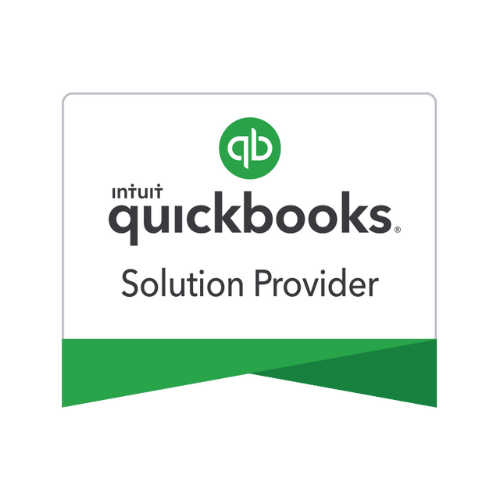By Rob Nixon, CEO Panalitix and host of the Firm of NOW roadshow
4 Elements of a Strong Sales Letter
Communication is a critical component of any sales program. And even in the Internet age, a strong sales letter still makes an impact when written correctly.
There are four characteristics of a successful sales letter:
Has an offer or a product description that grabs the reader’s attention. Use the subject line of an email or open with a headline in different typeface, font or color to grab your readers’ attention.
Let customers know what you can do for them and keeps them interested in the details. Use bullet points or highlight the benefits of your offering.
Illustrates the benefits of the product explicitly and features testimonies from real users of the products. Always ask permission to use customer feedback in your promotions. Whenever possible, site the customer name and any pertinent information.
Contains a strong call to action. Be clear about how the customer can get in touch with you.
Consider 2 letters and place a code to track which one gets the most responses.
Some Basics for Keeping the Books
Keeping your financial records up to date won’t be a problem if you do what is necessary on a regular basis. The following checklist outlines the tasks required to maintain accurate accounting records.
Daily:
- Total all cash on hand.
- Record income. Enter a summary of sales and cash receipts in an income ledger.
- Record all payments made by cash or check.
- Enter deposits in your business checkbook to keep the balance current.
- Record inventory, adding any new items received.
Weekly:
- Review accounts receivable, and take action to collect .
- Review accounts payable, remembering to take advantage of discounts.
- Prepare payroll. (Records should include name and address of employee, Social Security number, number of exemptions, date ending the pay period, hours worked, rate of pay, total wages, deductions, net pay and check number.)
- Deduct items sold from inventory, adjusting records to reflect the week’s sales.
Is It Time to Hire Some Help?
Knowing when to hire is just as critical as knowing whom to hire. While small businesses can be reluctant to hire additional help, it’s critical to hire help when you can no longer keep up with your business’ rate of growth.
You need to hire help when:
You are unable to balance the demands of your professional life with the demands of your personal life.
You have trouble meeting deadlines.
You lack the expertise to do it (i.e. bookkeeping or advertising).
Your health is adversely affected by workload.
Your relationships are strained.
You frequently hire independent contractors to complete certain tasks.
You consistently decline work that you cannot handle.
You are preoccupied with menial tasks, such as typing and answering phones.
Closing a Sale
Closing a deal is an art. Make sure your sales team asks a closing question and does not just end with a script or presentation. This gives your customer a sense of authority. Remind your sales team to wait for the answer before closing. Prospective customers send important messages to the well-trained salesperson. Train your team to pay attention to nonverbal clues of displeasure and pleasure. These are opportune moments to relieve customer concern or excite them.
Some nonverbal clues worth watching:
Touching or handling the product. Testing or trying the product
Smiling, laughing or becoming more relaxed and friendly
Increasing eye contact with the salesperson
Brainteaser
Do the following exercise, guaranteed to raise an eyebrow. There’s no trick or surprise. Just follow these instructions, and answer the questions one at a time and as quickly as you can!
Again, as quickly as you can but don’t advance until you’ve done each of them. No PEEKING ahead.
Think of a number from 1 to 10
Multiply that number by 9.If the number is a 2-digit number, add the digits together.
Now subtract 5.
Determine which letter in the alphabet corresponds to the number you ended up with (example: 1=a, 2=b, 3=c, etc.)
Think of a country that starts with that letter.
Remember the last letter in the name of that country.
Think of the name of an animal that starts with that letter.
Remember the last letter in the name of that animal. Think of the name of a fruit that starts with that letter. Are you thinking of a Kangaroo in Denmark eating an Orange?
If not, you’re among the 2% of the population whose minds are different enough to think of something else. 98% of people will answer with kangaroos in Denmark .
A Purchasing Plan for Successful Inventory Management
Well-planned purchases affect the price, delivery and availability of products for sale. That’s why having a buying plan is critical to your business’ performance.
Successful inventory management demands that buying plans be formulated early enough to allow for intelligent buying without any last minute panic purchases.
Your purchasing plan should account for the depletion of the inventory. Before making a decision about the level of inventory to order, determine how long the inventory you have in stock will last.
A good purchasing plan details:
When commitments should be placed
When the first delivery should be received
When the inventory should be peaked
When reorders should no longer be placed
When the item should no longer be in stock
What about Conflict?
Another key to successful management lies in managing conflict. Conflict is an inevitable part of business and the workplace, but it doesn’t have to be crippling. A measure of an organization’s success is the degree to which conflict can be exposed and the energies associated with it channeled to develop good ideas, better relationships and stronger services.
Establishing policies and procedures is the first step to managing conflict. Take some time to consider how you want to handle challenges from and within your team. Do you have an open door policy where team members can talk to you about their concerns? Clearly communicate your philosophy and policies around conflict. For example, you may welcome differences of opinion about work-related issues but not tolerate gossiping, insulting or attacking verbally someone or their position. Be sure to discuss this with your team.
A Logo: Why Does it Matter?
Are logos really all that matter or is it the service and product? It would be easy to say that your corporate identity has less to do with logos and graphic arts than with quality of service. But remember, your logo IS your corporate identity. It’s what people identify with your company, so it’s important and complex.
Simply redesigning a company’s corporate image can run into millions when you include repainting the livery on company vehicles, replacing signage on buildings and redesigning and replacing corporate uniforms. And you may have noticed or worked for companies who routinely change their identity. That’s a bad sign…a sign that they don’t know who or what they are about.
Always remember, first impressions play a major role in the decision-making process. Projecting a clear, strong, well-designed visual identity is essential.
Your logo and corporate image should reflect your industry, your business’ personality and your mission. For example, a lawyer would not likely reference a smiley face in their logo, but an underwear company might.
Companies in direct contact with consumers should express a bolder and more exciting image if they want to stand out from the crowd. Virgin Airlines, Gap and Fosters are good examples of companies who employ such tactics.
Your company identity should be part of your business plan so that the image that you project represents the type of company you operate. If your business caters to high-end clientele, then your image should reflect that. If you serve the bargain hunter, having an expensive appearance may drive your target consumer away. Businesses that promote a sense of fun should do so in their logo as well.
Join Rob Nixon and BooXkeeping on the Firm of NOW roadshow that is traveling through the US in November and December of 2016. Use code Boox for a $50 discount on each registration. Learn more at www.firmofnow.com.








